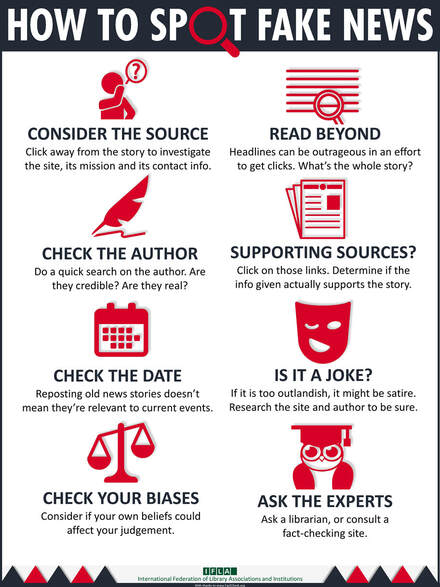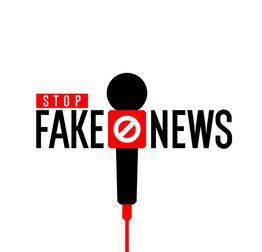WHAT IS FAKE NEWS?
HOW TO SPOT FAKE NEWS
 https://www.ifla.org/publications/node/11174
https://www.ifla.org/publications/node/11174
-Look for unusual URLs. If they end with l-o or .com.co, chances are they are not creditable news sites.
- -Dissect the layout of the website. Look for grammatical errors, incorrect dates,
- bold claims with no sources, and sensationalist images. These are all red flags.
- -Dig deeper. If this information doesn’t exist or you need to register to get it, then
- question why. Also consider who wrote the article and who supports the site, if it is
- heavily biased, it is another potential red flag.
- -Cross check information. Use fact checking sites to confirm information and see whether other credible news outlets are reporting similar news.
- -Dig deeper. If this information doesn’t exist or you need to register to get it, then
- bold claims with no sources, and sensationalist images. These are all red flags.
WHAT CAN YOU DO ABOUT FAKE NEWS?
- Learn to recognize fake news disinformation. Be curious and investigate what you read and hear. Avoid taking information at face value.
- Use news sources that are creditable. Creditable sources are held accountable for their content and follow journalistic ethics and standards.
- Be careful before you decide to share news content with others on social media. Pause and reflect on news and information that arouses strong emotions, positive or negative.
- Learn to recognize your own biases.
